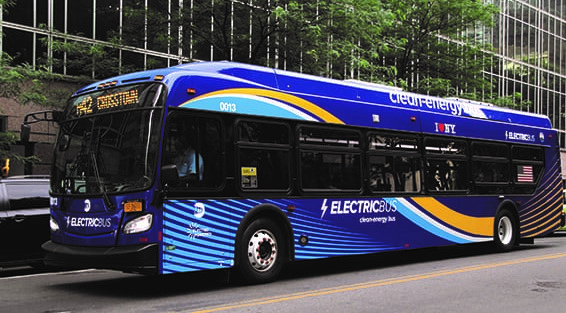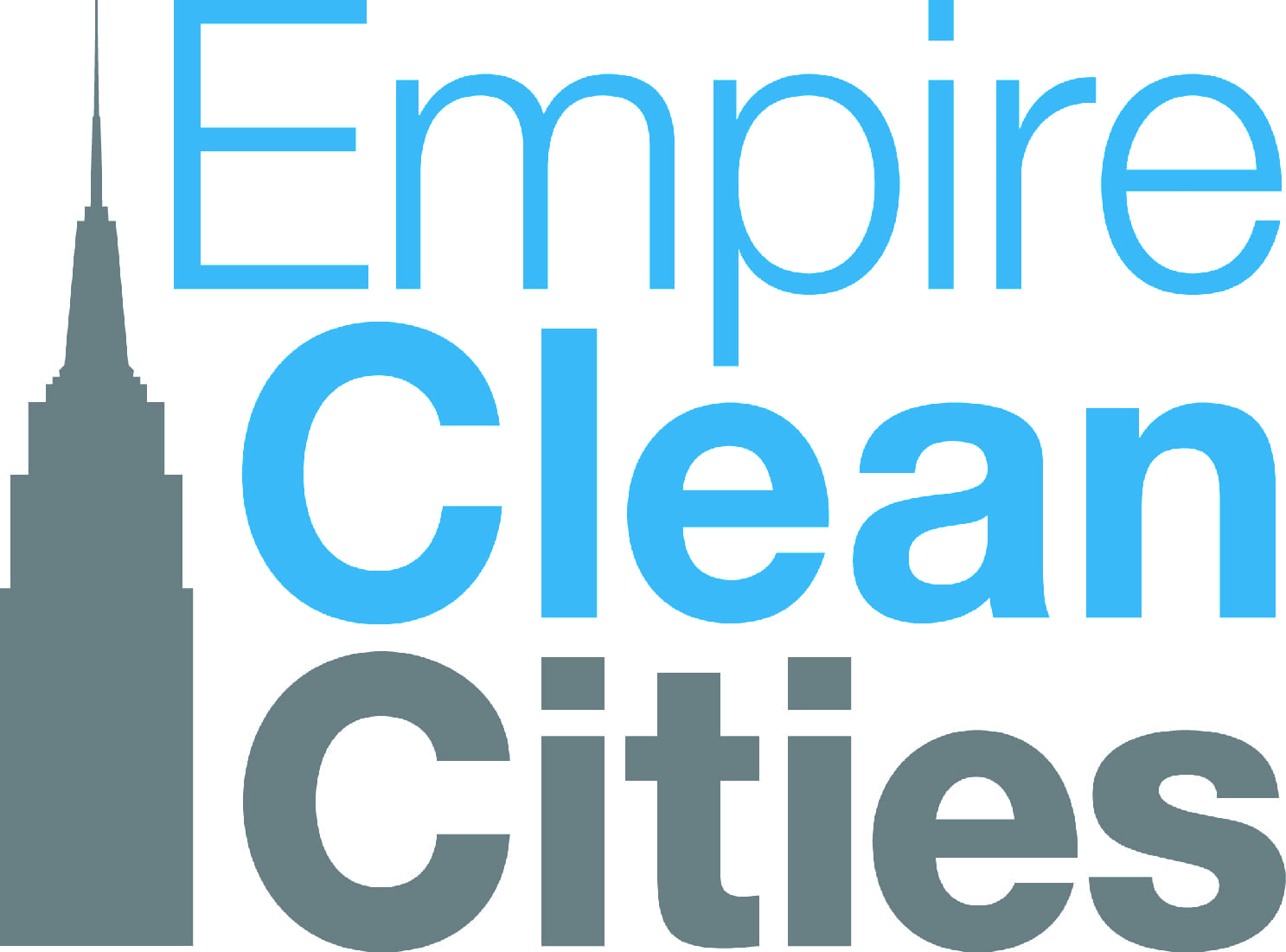In July, New York signed a Memorandum of Understanding (MOU) with 14 states (and Washington D.C.) in a commitment to phase out diesel-burning medium- to heavy-duty truck and bus sales by one hundred percent by 2050, with a target for 30 percent of new truck and bus sales to be zero-emission by 2030. The other states include California, Colorado, Connecticut, Hawaii, Maine, Maryland, Massachusetts, New Jersey, North Carolina, Oregon, Pennsylvania, Rhode Island, Vermont, and Washington. The MOU is the largest-ever multi-state collaboration to address air pollution from the transportation and heavy-duty sector.
Key policies identified in the MOU include an Advanced Clean Truck Rule, investments into electric vehicle charging infrastructure, and coordination with the existing ZEV Task Force facilitated by the Northeast States for Coordinated Air Use Management (NESCAUM). The types of vehicles addressed in the MOU include large pickup trucks and vans, delivery trucks, box trucks, school and transit buses, and long-haul heavy-duty trucks.
The multi-state MOU commits to phase out diesel fueled medium- and heavy-duty trucks and buses one hundred percent by 2050.
New York Goals to Reduce Emissions
The signatory states represent about one third of U.S. truck registrations and move nearly 40 percent of goods (by value) by truck. To reach the 2030 and 2050 targets, vehicle manufacturers will be expected to make more zero-emission models, adding additional variety to the 70 currently available medium- and heavy-duty vehicles that are commercially available. This is especially crucial to New York, as approximately 30 percent of greenhouse gas (GHG) emissions come from the transportation sector. According to the New York State Greenhouse Gas Inventory, on-road vehicles fueled by gasoline and diesel produce carbon dioxide (CO2), nitrous oxide (N2O), and methane (CH4) emissions that directly contribute to climate change. Furthermore, on-road transportation contributes to elevated levels of particulate matter and air toxins that disproportionately impact low-income communities and communities of color in New York, often located near major trucking corridors, ports, and distribution hubs.
The focus on electrifying the transportation sector also supports a number of other initiatives in the state aimed to reach reduced carbon emission goals set by the Climate Leadership and Community Protection Act (CLCPA), requiring New York to achieve a carbon free electricity system by 2040 and reduce greenhouse gas emissions 85 percent below 1990 levels by 2050. To date, there are several programs and initiatives to support electrification of the heavy-duty sector and help achieve carbon neutrality in New York.
New York’s focus on reducing transportation sector carbon emissions is supported by multiple initiatives.
Additional Electrification Efforts in New York
The New York State Beneficiary Mitigation Plan, administered by the Department of Environmental Conservation using Volkswagen Settlement Funds, sets overall goals of improving air quality and accelerating the transition to zero emission transportation. The air quality improvement goals address reducing nitrogen oxides, GHGs, particulate matter, hydrocarbons and mobile source air toxic emissions throughout the state. New York received approximately $128 million for air quality improvement and emissions reduction projects such as vehicle replacement programs and the installation of electric vehicle supply equipment (EVSE).
One of these programs is the New York City (NYC) Clean Trucks Program. The NYC Clean Trucks Program provides $9.8 million to replace older, polluting diesel-powered trucks in New York City with new, less polluting trucks. The rebate incentive funding is available to fleets and businesses located in or providing service to Industrial Business Zones (IBZs), typically heavy manufacturing areas. The goal is to replace diesel-burning trucks with all-electric, zero tailpipe emission trucks; Environmental Protection Agency (EPA) emission compliant alternative fuel trucks (compressed natural gas, diesel-electric hybrid, and plug-in hybrid electric); or new diesel trucks. The funding became available on June 3, 2020. Fleets and businesses in eligible geographic areas are encouraged to apply.
The NYC Clean Trucks Program provides funding to replace older, polluting diesel-powered trucks with new, less polluting trucks.
New York EV Make Ready Program
Concerns over a lack of charging infrastructure in New York are also being addressed through a new EV Make-Ready Program, approved by the New York State Public Service Commission (PSC). The EV Make Ready Program was announced in an executive order from the Governor’s office on July 17 and commits the investment of over $700 million to support electric vehicle supply equipment (EVSE) and other infrastructure, with $200 million dedicated to environmental justice communities and $48.8 million for transit bus and school bus operators.
Investments from six investor-owned utilities in New York will fund the installation of over 53,000 Level 2 charging stations and 1,500 fast charging stations by 2025. The EV Make-Ready Program also addresses fleet needs for electrification, requiring utilities to create a Fleet Assessment Service for site feasibility, rate analysis, and to help fleet owners identify cost- and time-saving opportunities.
New York’s EV Make Ready Program commits the investment of over $700 million to support transportation electrification.
Clean Fuels NY and A Low Carbon Fuel Standard
The multi-state MOU adds to an ongoing effort in New York to meet zero-emission standards for light- to heavy-duty vehicles within the next ten to thirty years. This includes efforts to create a low carbon fuel standard (LCFS) in the state. In a LCFS program, vehicle fuels are scored based on their carbon intensity. For example, gasoline and diesel score highly while electricity scores low. Suppliers whose fuels are above a certain carbon intensity are required to purchase credits from producers and users of low-carbon fuels. A LCFS has been successfully implemented in California, where carbon emissions fell by 38 million tons and the state mitigated 13.7 billion gallons of petroleum between 2011 and 2018, while also creating thousands of clean energy jobs.
Clean Fuels NY is a coalition of approximately 40 stakeholders from diverse industries and businesses, including leading environmental, public health, and energy groups. The coalition advocates for a LCFS in New York, ultimately requiring fuel providers to reduce GHG emissions or purchase carbon credits associated with the fuels they make and sell. A LCFS in New York supports electrification of on-road transit in the state, as well as other non-petroleum fuels produced from waste and agriculture. While not yet signed into law, Clean Fuels NY demonstrates the broad and diverse support in New York for a LCFS to reduce greenhouse gas emissions from the transportation sector.
The multi-state MOU will have an Action Plan completed within six months, including incentives, investments and regulations.
A Clean Air Future Depends on these Strong Policies
Returning to the topic of the multi-state MOU, within six months the 15 states will have completed an Action Plan, including incentives, investments and regulations. With programs such as the EV Make Ready Program, NYC Clean Trucks Program, a potential LCFS, and the multi-state collaboration, New York is well-positioned to effectively phase-out its dirtiest polluters— diesel-burning medium- and heavy-duty trucks and buses. It is critical now that strong policies be set in place to secure a clean air future.



